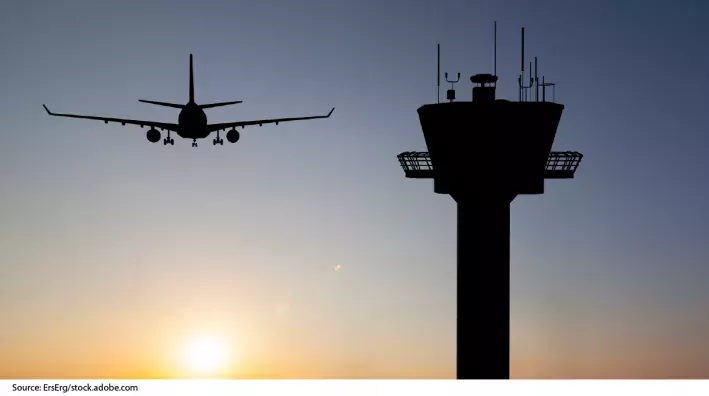As Holiday Travel Season Starts, We Look At Changes Being Made to Air Traffic Control
If you’re traveling this Thanksgiving, you may notice that airports are once again busy. In fact, air travel has largely returned to pre-pandemic levels and demand is expected to rise. The Federal Aviation Administration (FAA) is working to meet this demand and improve safety.
One program that promises to help tackle challenges like close calls and delayed flights is the Next Generation Air Transportation System (NextGen). NextGen replaces airports’ ground-based air traffic control systems that use radar and voice communications with satellite-based navigation and digital communications. But plans for NextGen are currently over budget and the program has not been fully implemented.
Today’s WatchBlog post looks at our new report on FAA’s efforts to land NextGen.
Image

The plan for NextGen
FAA has been working to changeover air traffic control systems to NextGen since 2003. However, NextGen is a complex, costly program that requires investments—not just from FAA, but from airlines themselves. To date, NextGen has cost the taxpayer $14 billion and is estimated by FAA to cost government and industry at least $35 billion total through 2030.
With such a long timeline for implementation, Congress asked us to look at challenges that could further delay NextGen and increase costs.
Equipping Aircraft. Installing NextGen equipment on aircraft hinges in part on industry buy-in. General aviation and airlines must be willing to purchase new technologies for their aircraft. Their buy-in requires that they see benefits that will justify the cost.
Another challenge to gaining industry buy-in is that the benefits of NextGen aren't the same across aircraft. Some aircraft may need more modifications to fully realize the benefits of NextGen.
Cybersecurity, New Entrants, Spectrum Interference. Cybersecurity risks will grow as new airspace users join the National Airspace System. For example, new entrants—like drones and commercial spacecraft—were not envisioned when NextGen began. They could have implications for safety, budgets, planning, and how the airspace is structured. And finally, FAA must overcome the potential threat from spectrum interference.
In addition to these challenges, NextGen and FAA has faced delays caused by unanticipated events like COVID-19 and the 2019 government shutdown. After COVID, implementation schedules had to be revised for some NextGen programs, which not only exacerbated delays but also led to increased costs.
What needs to happen next?
One way to improve the success of the NextGen program’s implementation is for FAA to fully follow leading practices in program management. In our new report, we made several recommendations to FAA to help it better follow these leading practices. These include updating FAA’s lifecycle cost estimates, which could provide Congress with a more accurate picture of FAA’s long-term funding needs and effectively allocate resources for NextGen. We also think FAA should develop a risk mitigation plan. This will allow it to more effectively identify, prioritize, and respond to risks—such as delays caused by COVID-19, challenges related to new airspace users, and threats from cyberattacks.
Learn more about FAA’s NextGen plans and the challenges it faces by checking out our new report.
- GAO’s fact-based, nonpartisan information helps Congress and federal agencies improve government. The WatchBlog lets us contextualize GAO’s work a little more for the public. Check out more of our posts at GAO.gov/blog.
GAO Contacts
Related Products

GAO's mission is to provide Congress with fact-based, nonpartisan information that can help improve federal government performance and ensure accountability for the benefit of the American people. GAO launched its WatchBlog in January, 2014, as part of its continuing effort to reach its audiences—Congress and the American people—where they are currently looking for information.
The blog format allows GAO to provide a little more context about its work than it can offer on its other social media platforms. Posts will tie GAO work to current events and the news; show how GAO’s work is affecting agencies or legislation; highlight reports, testimonies, and issue areas where GAO does work; and provide information about GAO itself, among other things.
Please send any feedback on GAO's WatchBlog to blog@gao.gov.




